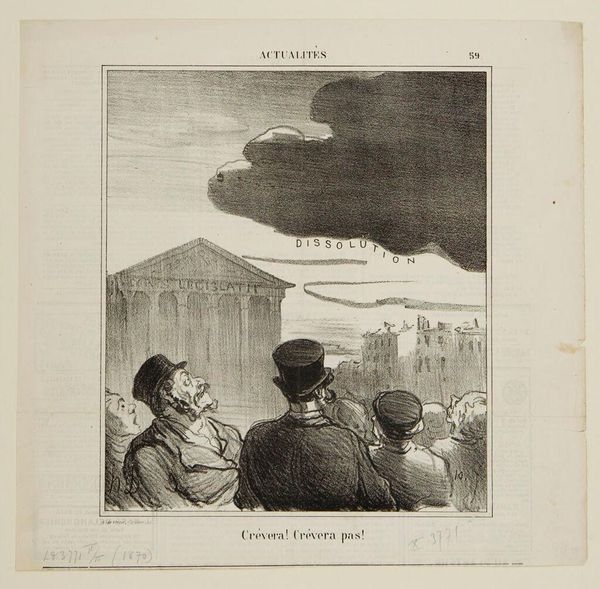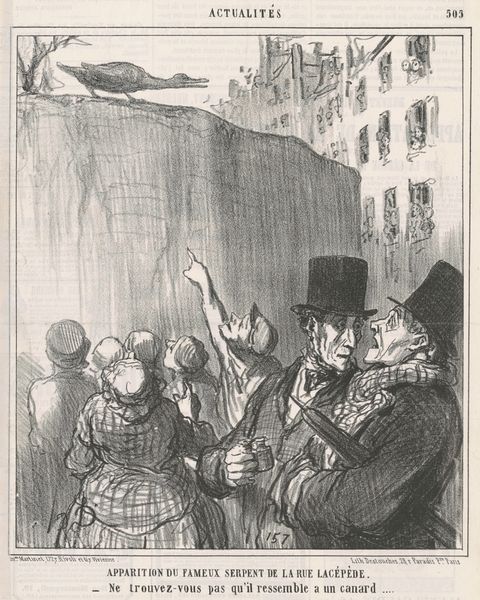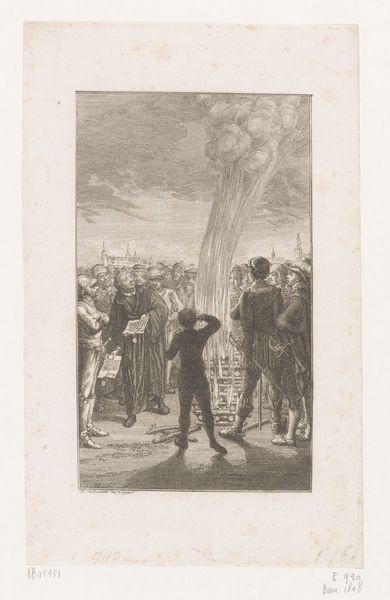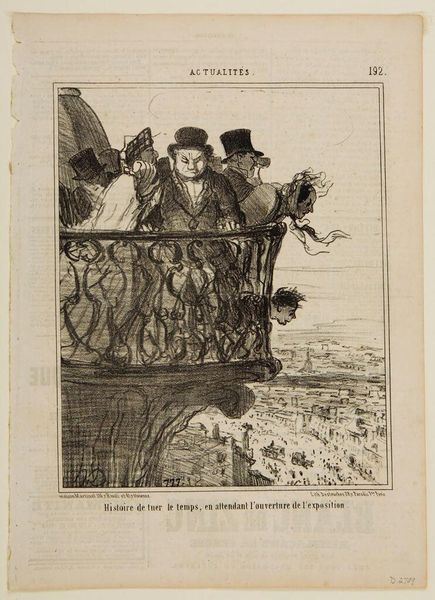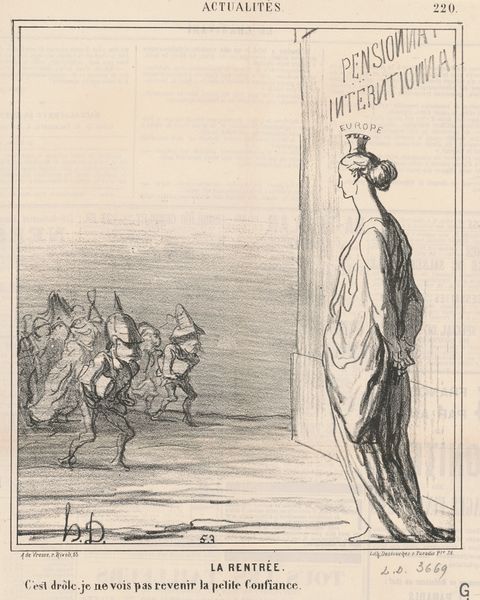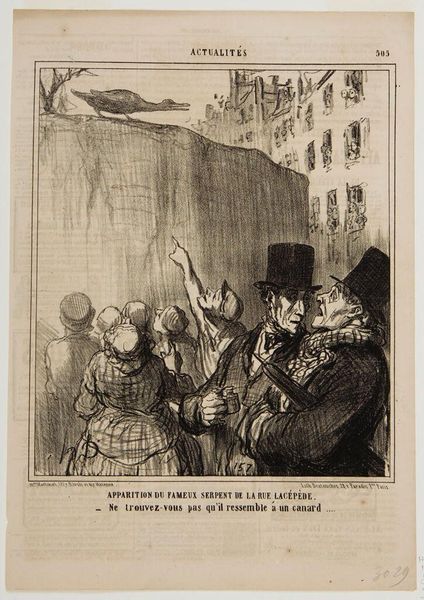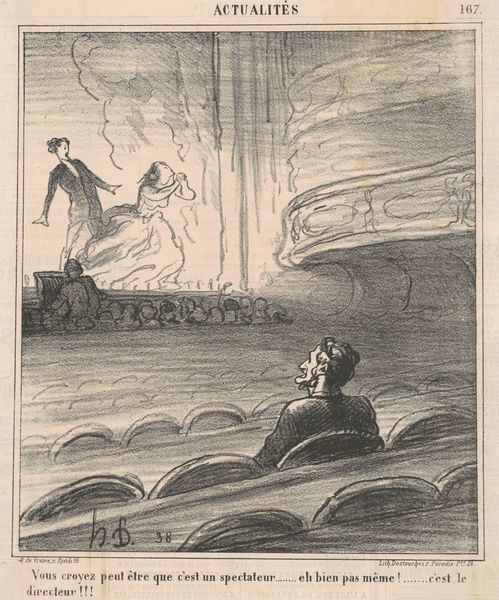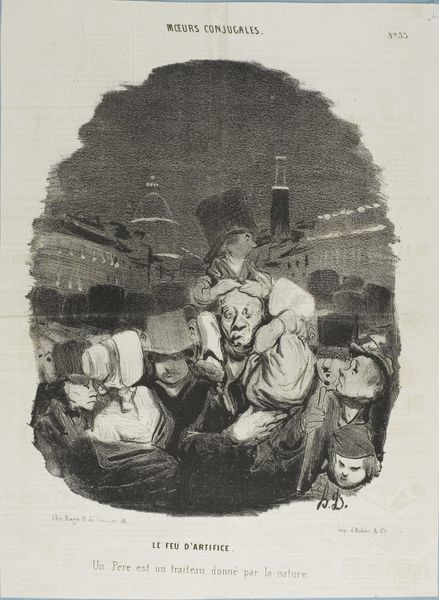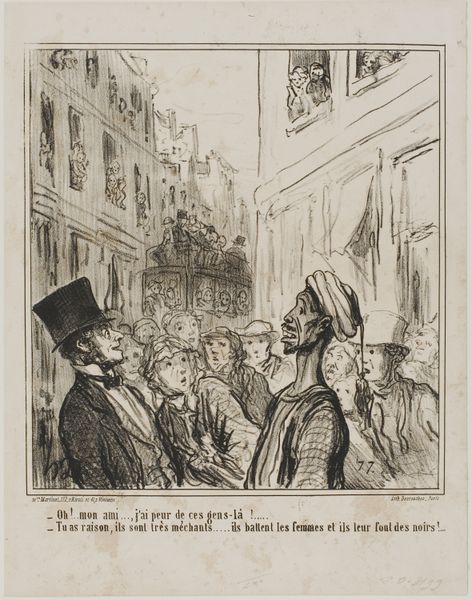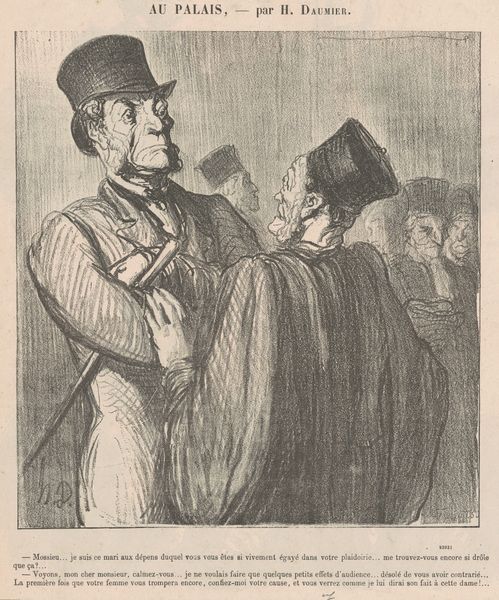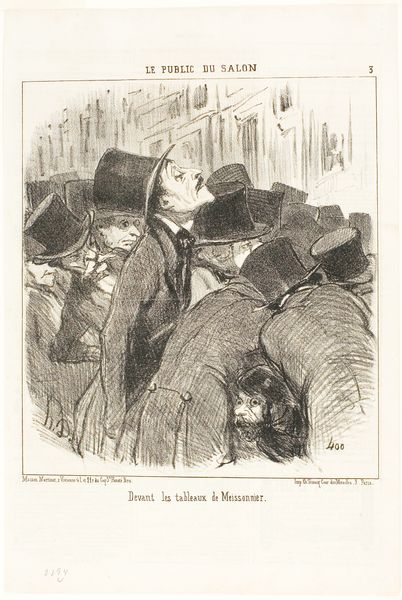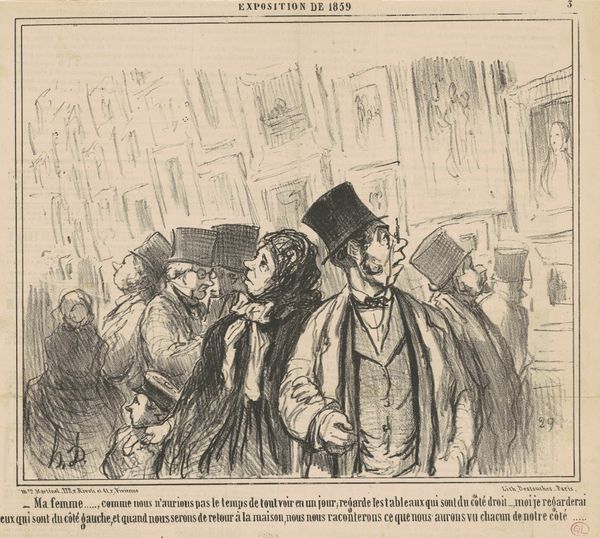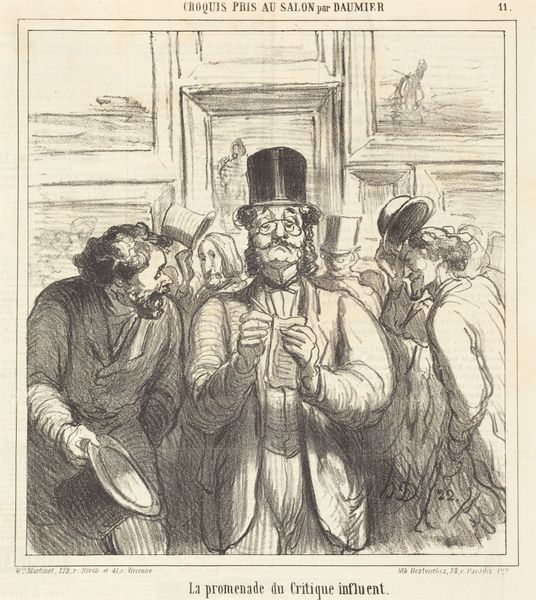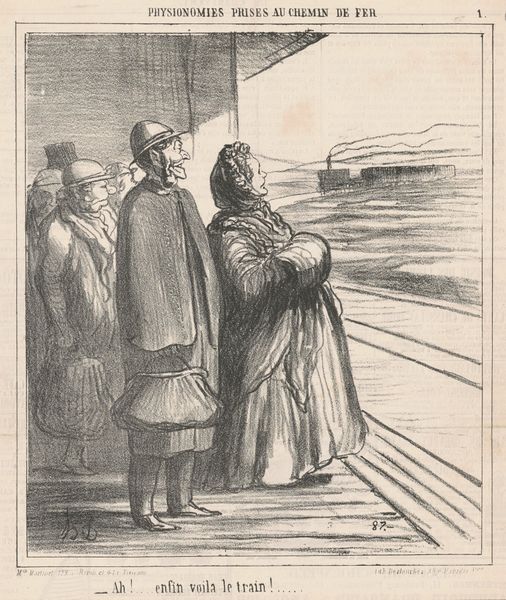
drawing, lithograph, print, pen
#
drawing
#
lithograph
# print
#
caricature
#
romanticism
#
19th century
#
pen
#
genre-painting
#
history-painting
#
realism
Copyright: National Gallery of Art: CC0 1.0
Curator: What an image! Honoré Daumier's "Crèvera! Crèvera pas!" from around the 19th century is a marvel in lithography. The weight of the line, the tonal gradations he achieves! It almost vibrates. Editor: It certainly evokes a particular mood, a kind of… expectant dread. Look at this crowd craning their necks. There’s a heavy sky pressing down, with “Dissolution” hanging right there, spelled out amidst the ominous clouds. What is dissolving here? Curator: Well, "Crèvera! Crèvera pas!" roughly translates to “Will it burst? Won’t it burst?” The crowd below, the building that appears to read "corps législatif," and those foreboding skies...it all points towards political turmoil, I suspect. Daumier was often lampooning the bourgeoisie and the political landscape. Editor: Exactly. And that title! The stakes are high. The question becomes whether we’re just passive observers, betting on the sidelines as power structures rise and crumble. What power do "we the people" actually have in preventing any explosion from occurring? Curator: Hmm, maybe the people aren’t all that innocent here. Maybe it's about their complicity, you know? Daumier often walked that fine line between sympathy and scathing critique. I bet he felt he was both an observer and actively participating in the landscape he was lampooning. That is always the push and pull for the artist, right? Editor: I think the beauty of this piece lies in its accessibility. Daumier used the relatively new medium of lithography to quickly disseminate political cartoons amongst the masses. Images like this shaped public opinion in 19th-century France. But there are parallels that are deeply contemporary. Curator: Totally! You could put this on the cover of half the magazines out there and it still feels fresh. As with any great work, it gives you that delicious shock of recognition, like a funhouse mirror held up to the status quo. It’s more than social commentary. There’s a very real understanding of the absurdity that comes along with the human condition! Editor: Yes. Its ability to encapsulate anxiety around sociopolitical collapse resonates today just as strongly, prompting us to think critically about our roles during periods of upheaval and dissolution. Curator: Well said! Here's hoping we might just take this message into action, no longer as the passive observers, and ready to engage in a meaningful discourse to shape a more collaborative future for us all.
Comments
No comments
Be the first to comment and join the conversation on the ultimate creative platform.
